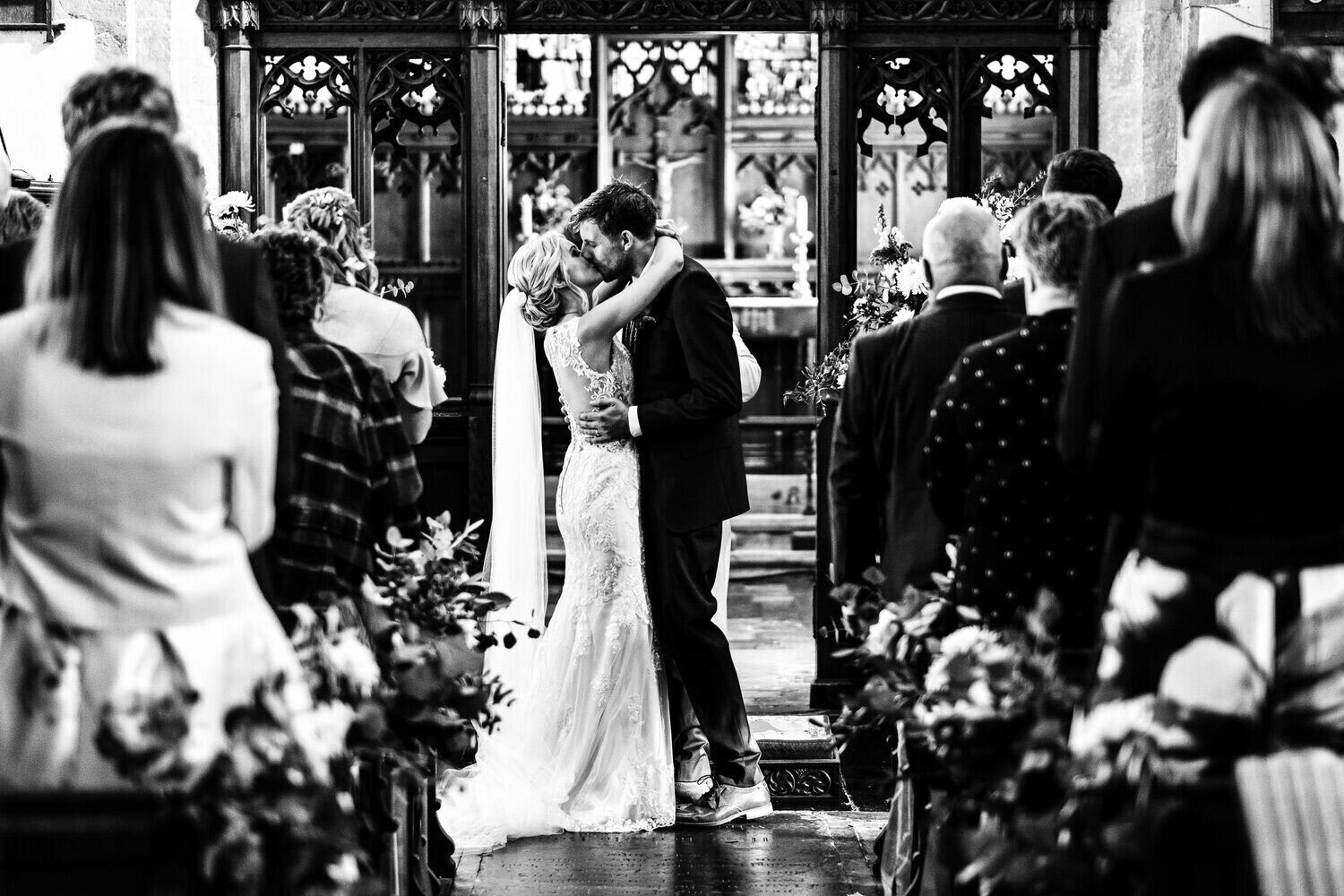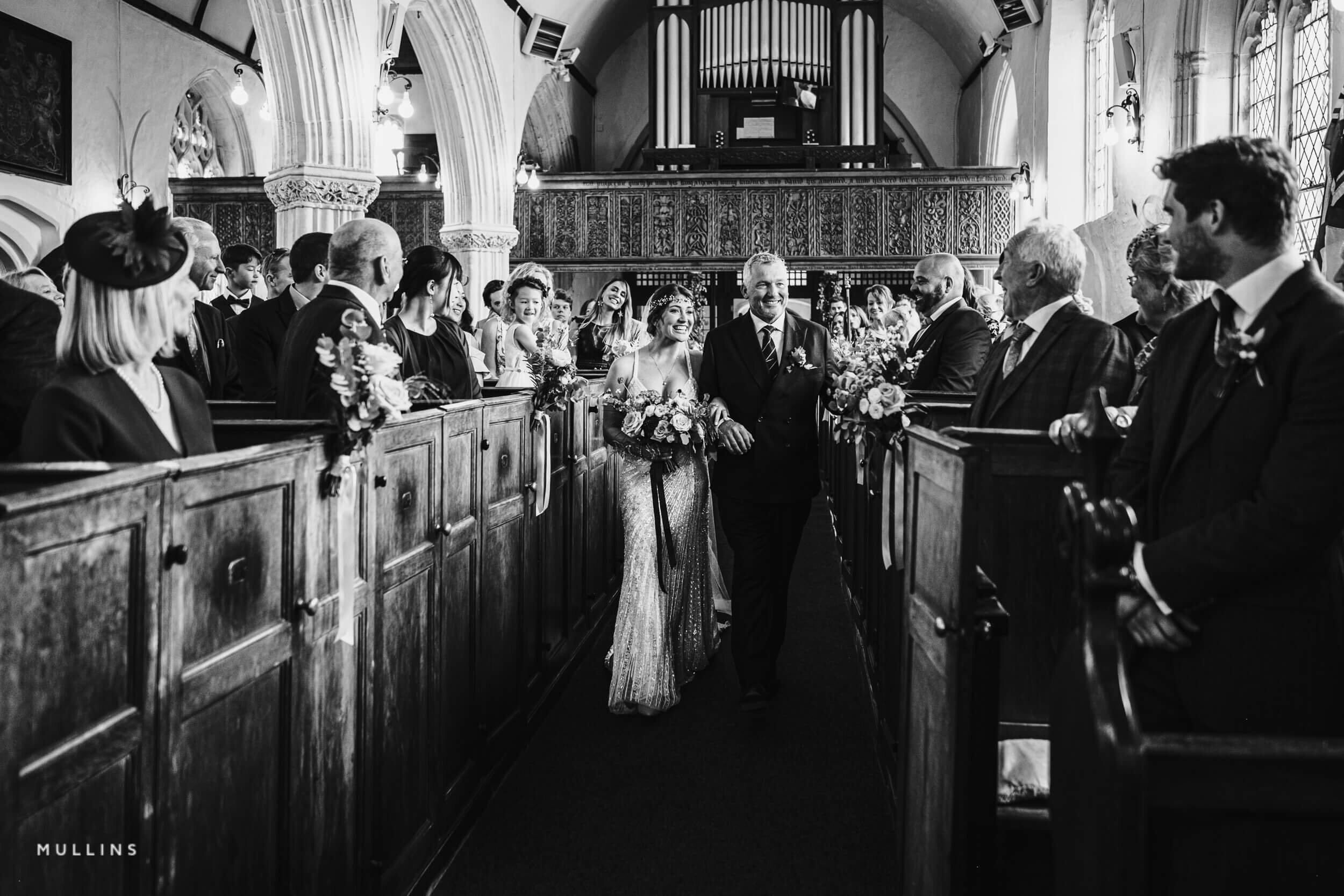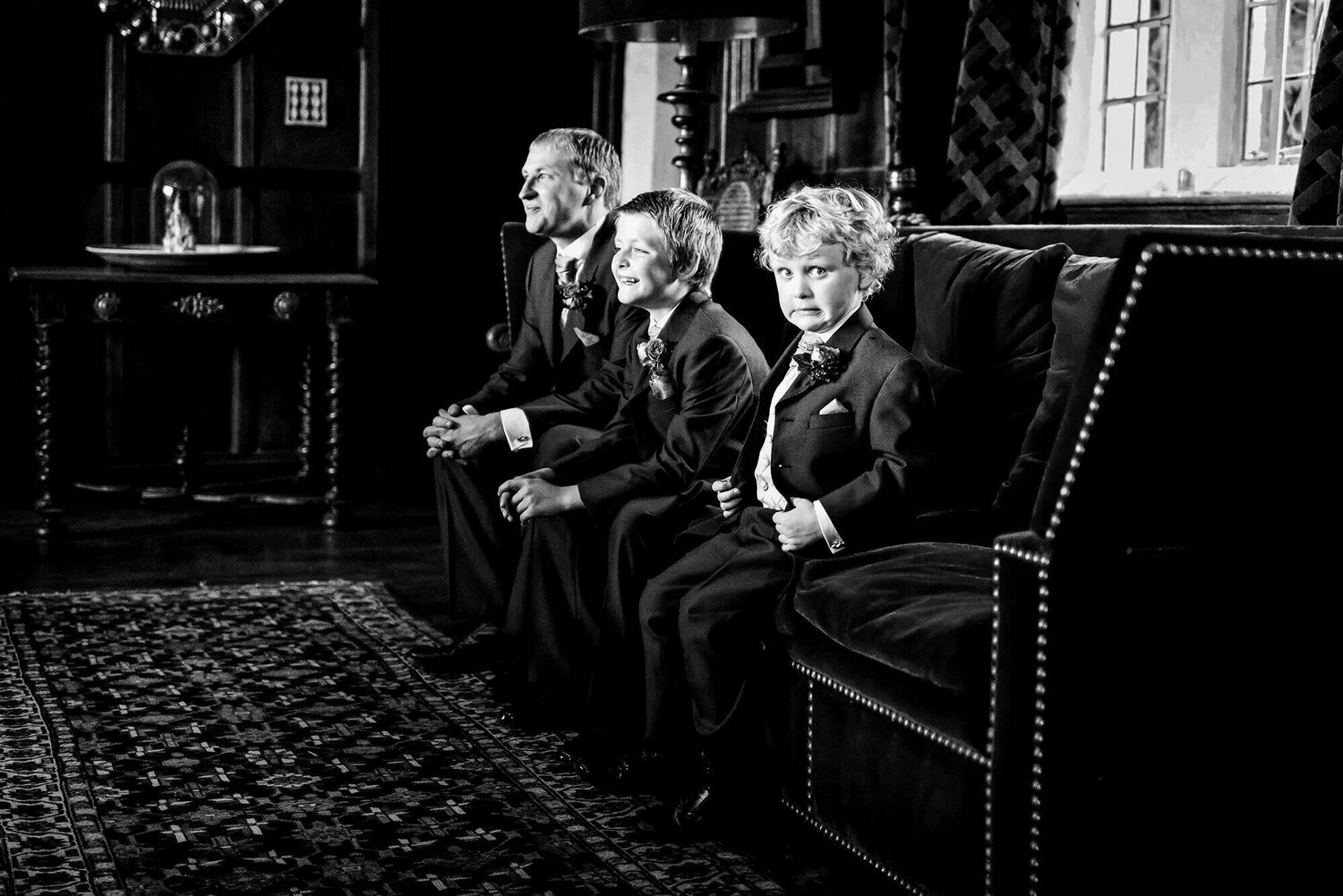Wedding Photography with Fuji Cameras – 100 Photos
A veil lift at a recent wedding.
I’ve lost count of how many weddings I’ve photographed now—it’s somewhere around 800—but I do know that a vast majority of them were shot on Fujifilm cameras. From the very first FinePix X100 back in 2011 to the latest X-T5 and X100VI, Fuji has been there with me through just about every confetti toss, quiet moment, and dad-dancing breakdown.
It's been over 13 years since I first wrote Shooting Weddings with Fuji. That blog post remains the one with the most hits on this website to date.
This post is a bit of a celebration, really. A look back over my years shooting weddings with Fujifilm—through the lens of 100 pictures. All real moments. No setups, no stylised shoots. Just weddings, exactly as they happened.
Whether you’re a wedding photographer already using Fuji gear, or someone thinking about making the switch, I hope this gives you something useful. It’s not just a showcase of what these cameras can do (though it is that too). It’s also a gentle encouragement, I suppose—a kind of visual conversation about why I stuck with Fuji for so long, and why I still think they’re the best tools for this kind of work.
Here’s what to expect in the post:
A curated collection of 100 documentary-style wedding photographs, all taken on Fujifilm cameras—X-Pro1 through to X-T5, with a few guest appearances from the X100 and X70 series.
Honest thoughts on why I prefer Fuji for wedding work.
Some light commentary along the way—where needed—but mostly, I’ll let the images do the talking.
A bit of insight into how I use these cameras in real wedding environments.
Links to my Wedding Photography Tips page and my online course, The Art of Documentary Wedding Photography, for anyone wanting to dig deeper.
It’s a long post—definitely not something to skim on a phone while you’re waiting for the kettle to boil. But if you’re serious about wedding photography, or seriously curious about Fuji gear, I think you’ll get something out of it.
In this comprehensive online course, you get over 7 hours of practical documentary wedding training with lifetime access, no matter which payment option you choose. Learn how to use light, composition and human behaviour to tell honest, story-led wedding narratives with confidence, drawing on real-world lessons from 800+ weddings, practical advice, personal insights and a recorded live Q&A. Enrol once, and keep coming back to rewatch chapters, refresh ideas and refine your own approach.










The Switch to Fujifilm: Why the X100 Caught My Eye
Back in the early 2010s, I was shooting weddings with what most people were using at the time—big DSLRs, fast zooms, all the usual kit. The kind of stuff that worked, no question, but felt… well, heavy. Physically and creatively.
Then the original Fujifilm X100 came along. I didn’t jump on it straight away—if I’m honest, I wasn’t looking to change anything drastically, but I was very intrigued.
It was tricky to use at that first wedding, especially given that I was predominantly using DSLRS at the time. But I do recall thinking it’s amazing, and it’s a game-changer, andit’s got something. That felt more real.
Almost immediately, it changed how I saw things. It slowed me down (in a good way), encouraged me to compose more carefully, and—perhaps most important of all—it felt like a camera designed by someone who actually liked photography.
Was it quirky? Definitely. A bit laggy, soft at the edges, and the autofocus? Let’s just say it made you commit to your subject. But it also had a soul, and you can’t say that about most cameras.
That little camera ended up being the beginning of a complete shift in how I approached wedding photography. Less gear, more intuition. Less performance anxiety, more paying attention. It reminded me that documenting people—real people—was the part I loved most.
From that moment, I started experimenting. The X-Pro1 came next, and then the whole series of Fujis that followed.
I guess I should say—this isn’t going to be a technical review of Fujifilm cameras. There are plenty of those already, and probably more useful ones if you’re into charts and firmware history. What I can share, though, is what these cameras have meant to me, and what they’ve helped me create.










The X-Pro1 Years: A Bit Clunky, But Just Right
The X-Pro1 was, in many ways, the first Fuji camera that made me think, I could actually shoot an entire wedding with this. Not just as a second camera or a fun little sidekick, but as my main tool. And I did. Eventually.
It wasn’t love at first click. That first X-Trans sensor was... well, a bit stubborn. The files were beautiful, but only if you didn’t try to push them around too much in Lightroom. The autofocus felt like it was always second-guessing me. And there were definitely times during ceremonies where I found myself holding my breath, praying the thing would just lock on.
But even with all that, there was something magic in the pictures. The colour. The texture. The way the cameras handled light. It was the first time in years I felt excited by the look of my images straight out of the camera.
Initially, I started shooting with the X-Pro1 alongside my Canon gear—usually during the quieter parts of the day. Moments when I could afford to slow down. Speeches, little glances, that sort of thing. And then, before I realised what I was doing, I started reaching for the Fuji more than the Canon.
And the couples? They didn’t notice the switch. Or if they did, they didn’t care. I wasn’t holding up a huge camera with a massive lens anymore. I looked more like a guest. That felt like a win to me.
It’s important to note here that I’m a 100% Documentary Wedding Photographer. No posing, no direction. Just anticipation and observation. The Fuji system encouraged that. It made me look, instead of trying to control.
Some of the images you’ll see in this post come from that period—from those early days of trusting a smaller, quieter camera to do a very big job. They’re not perfect. I wasn’t perfect. But they marked a shift in how I saw wedding photography.
And once that shift happened, there really was no going back.










X-T1, X-T2 and the Rise of Trust
By the time the X-T1 arrived, I was properly invested in the Fuji system, and I was already an ambassador for them. The X-T1 felt like Fuji saying, we’re serious about this, and I think a lot of us took notice.
It wasn’t a perfect camera. The battery life was not great. The dials were lovely until your fingers were cold or you knocked one accidentally. But it was faster. Sharper. More dependable than the X-Pro1. And paired with lenses like the 56mm f/1.2 or the 23mm f/1.4 (the original one), it was a real workhorse.
I still remember one wedding—mid-summer, Wiltshire countryside, no second shooter, just me and two X-T1s. Not a single missed shot. Well... okay, maybe one or two. But nothing that mattered. I walked away from that day thinking, Right, this is it. These cameras can handle it all.
The X-T2 built on that confidence. Dual card slots, improved AF, better everything, really. I know some people don’t like Fuji’s habit of releasing a new model every few years, but I think they’ve mostly earned the right. Each version fixed real issues, not imaginary ones.
Then came the X-Pro2. And that camera... that was probably the most I’ve ever wanted to love a camera. And, most days, I did. The rangefinder styling, the joystick, the film simulations—it just felt right in my hands. I went all-in again. Weddings, street work, even some commercial stuff—it all went through that little black box.
It’s funny, though. Looking back, it wasn’t really the specs that mattered. It was the way these cameras made me feel. Lighter, both physically and mentally. Less burdened by gear, more focused on people. And that’s what good wedding photography is about—people.
I created a video back in those days where I put together every shot I took at a Wedding in France. It was an experiment (Fujifilm had asked me to do something like this for Photokina that year). You can see that video below.
X-T3, X-Pro3 and Chasing the Moments That Disappear
The X-T3, when it arrived, felt like a camera that just wanted to get out of the way. Faster autofocus, better EVF, 4K video that actually looked good—it was a proper leap forward. Technically, sure. But also in how confidently I could now approach a wedding day. There was less second-guessing. Less wondering whether the gear could keep up. It could.
The X-Pro3 came a little later, and that one… well, it split opinion. That hidden screen. The retro throwback. The digital film strip on the back. Some people hated it. I didn’t. I quite liked that it made you commit to what you were seeing through the viewfinder. It discouraged chimping. Forced me to trust my instincts a bit more. Not for everyone, but it suited me.
But by this point, the gear was almost secondary. I wasn’t thinking about it anymore. I was thinking about timing. Composition. Anticipation.
So many of the frames I love from this era—many of which you'll see in this post—are about that tiny sliver of time that happens just before or just after something obvious. Not the kiss, but the nervous breath before it. Not the first dance, but the way a mum grips her wine glass just a bit tighter as the music starts.
That’s where documentary wedding photography really lives, I think. In those quiet little folds of the day. The blink-and-you’ll-miss-it stuff.
I found myself drawn more and more to family dynamics too. The small, unspoken relationships. An uncle hovering just out of frame. A sibling leaning in, not quite sure whether to speak or stay quiet. I’d often shoot wide and let the moment play out, hoping the camera—whichever Fuji I was using that day—was fast enough to catch it, but not so intimidating it killed the moment entirely.
It’s those kinds of images—fleeting, maybe even throwaway to some—that I’ve grown to value the most. And Fuji, in its small, unobtrusive way, made them possible.










X-T5, X100VI and a Look Back at It All
By the time the X-T5 came along, I was starting to feel the shift. Not in the cameras—they were getting better all the time—but in me. I’d shot hundreds of weddings, more than I ever imagined I would. I was getting slower, more deliberate. Not burnt out exactly, just… full. Like I’d eaten enough and now just wanted to sit with the taste of it all.
The X-T5, though, was brilliant. Sharp, fast, light. Reliable in a way that almost felt boring—which is a compliment, honestly, in wedding photography. When you stop thinking about the gear, that’s when the real work starts.
The X100VI came not long after, and I loved it for different reasons. It reminded me of that first X100—back when everything felt fresh and slightly chaotic. But this one? This one was grown-up. Stabilised. Capable. A little machine you could trust completely… and still slip into a jacket pocket.
Some of the images from these later weddings—my final run, really—have a different feel. There’s more space in them. More patience. Fewer frames, but more looking. I was searching more deliberately for the human stuff. The soft glances. The things that might not make it into a wedding album but mean something later.
And that’s where we pivot, I think. From cameras to content. From gear to the guts of wedding photography.










Moments, Not Megapixels
I haven’t arranged these images in a particular order; not by camera model or lens choice, but they are all random moments. By the sorts of moments I learned to watch for, even when they seemed trivial at the time.
Anticipation
Anticipation lives in the breath before the action. It’s not loud. Sometimes it’s not even visible unless you’ve trained yourself to see it. But these were the frames I started to live for—the ones where nothing has happened yet, but everything might.
Family Dynamics
There’s a specific kind of body language that happens between relatives. The way siblings tease without words. How a father might quietly wipe a wine glass before handing it to his daughter, as if this moment might be judged. These aren’t moments you pose. You notice them, or you don’t.
Some of my favourite images in this post come from these micro-interactions. Not always in focus. Not always well-lit. But true.
Fleeting Things
These are the photos I used to worry weren’t ‘professional’ enough. Now, they’re the ones I keep coming back to. Fuji gear—with its speed, size, and charm—let me work close enough to catch them without interrupting them.










So, Why Fuji?
If you’ve made it this far—well, thank you. Honestly. This post was a bit of a labour of love. A chance to revisit the years I spent quietly (and sometimes not-so-quietly) documenting weddings with Fujifilm cameras slung over my shoulders.
I could have shown you sharper photos. Or more dramatic ones. Maybe something with a mountain in the background and a perfectly backlit couple. But that’s not what this has ever been about for me.
It’s been about people. About watching, listening, reacting. About catching a story before it disappears. And Fuji cameras—quirks and all—helped me do that. They never felt like a barrier. They felt like tools made by people who understood what photography feels like, not just what it looks like.


































“If you’re a wedding photographer considering switching to Fujifilm, I’ll say this: don’t worry so much about the gear. Any modern Fuji body can keep up. What matters more is how it changes the way you see. If it helps you slow down, notice more, blend in—then that’s probably the right system for you.”
And if you’re here because you’re trying to work out what kind of wedding photographer you really want to be, I get that too. Still working it out, if I’m honest.
That’s part of why I put together The Art of Documentary Wedding Photography course. It’s not about settings or kit bags. It’s about approach. Mindset. How to tell stories with subtlety and heart—whether you shoot Fuji or not. There’s a link below if you’re curious.
And if you’d rather browse at your own pace, my Wedding Photography Tips page is always open—just a pile of thoughts from one photographer to another.
Thanks again for being here. I hope the images stayed with you for a little while.
Now, go out and shoot something real.
Further Reading & Resources
Shooting Weddings with Fuji (2013)
The Art of Documentary Wedding Photography Course
Wedding Photography Tips
Why I Switched to Fujifilm 14 Years Ago (And Never Looked Back)
The Truth About Wedding Photographers
Behind the Lens: How I Captured These Wedding Photos
Inside the camera bag of Fujifilm X-Photographer – Kevin Mullins


